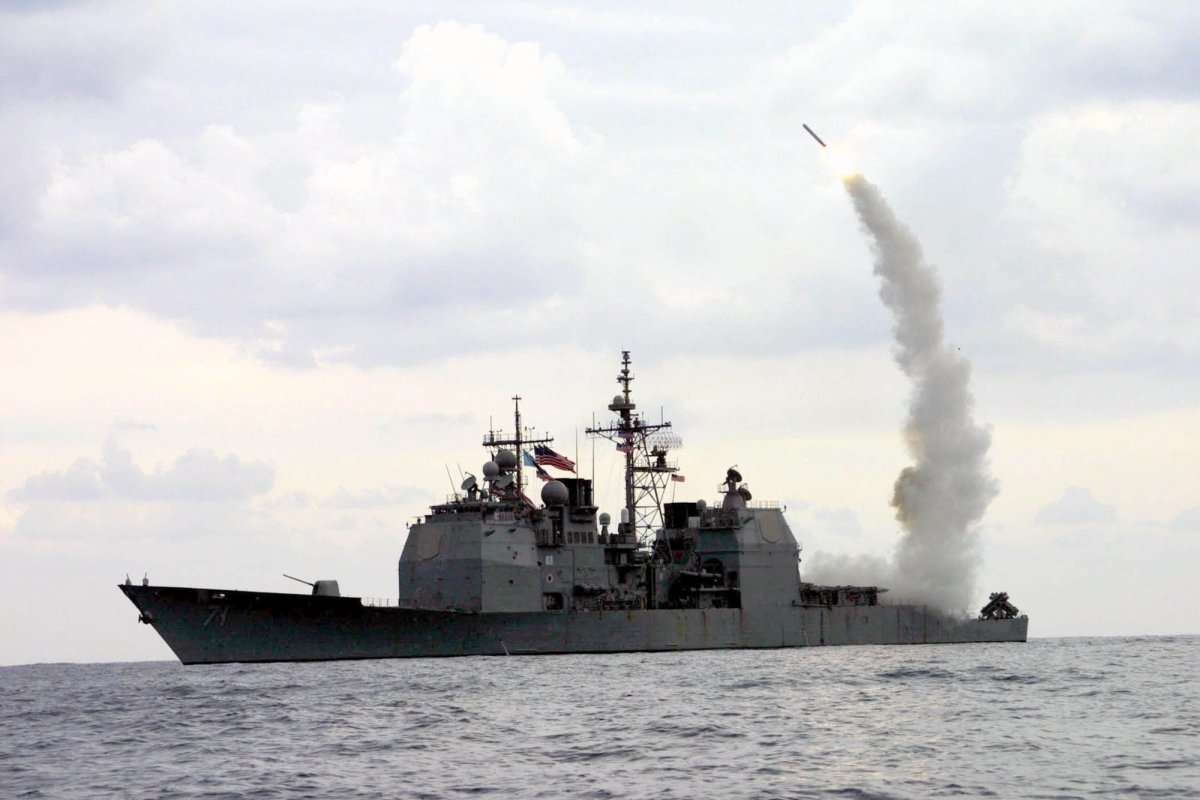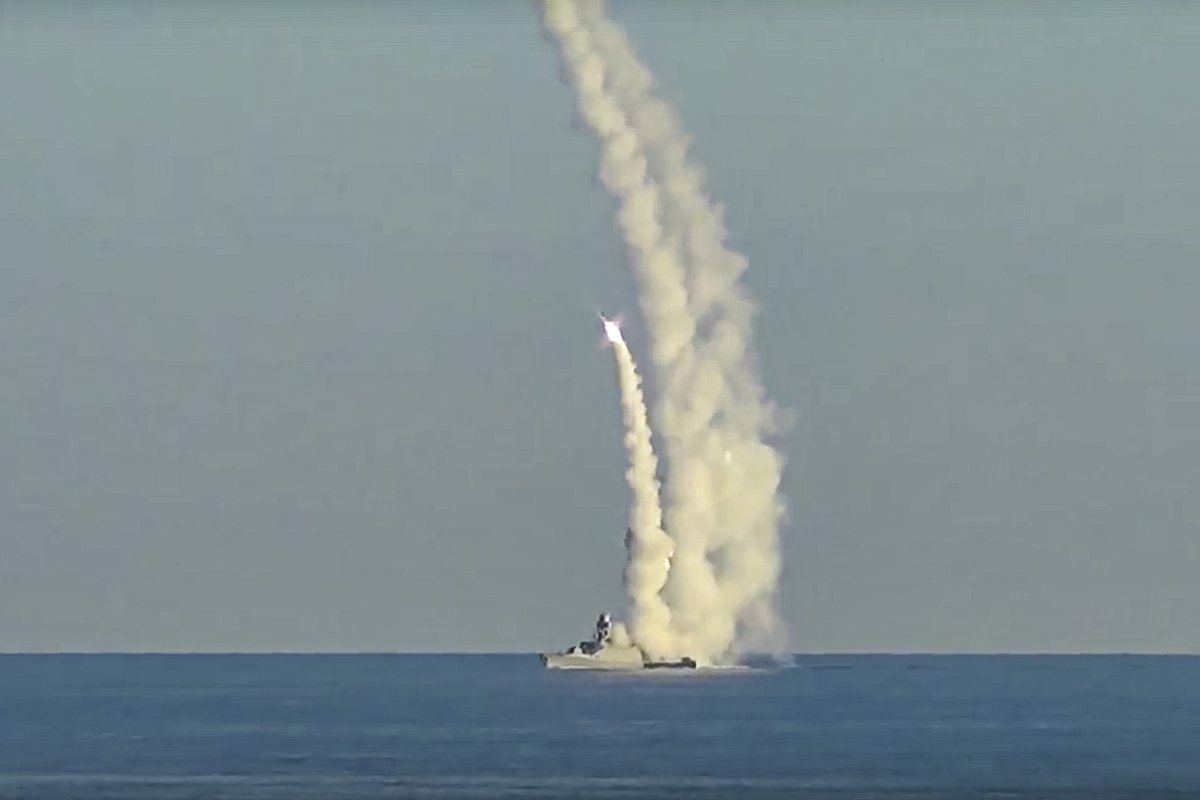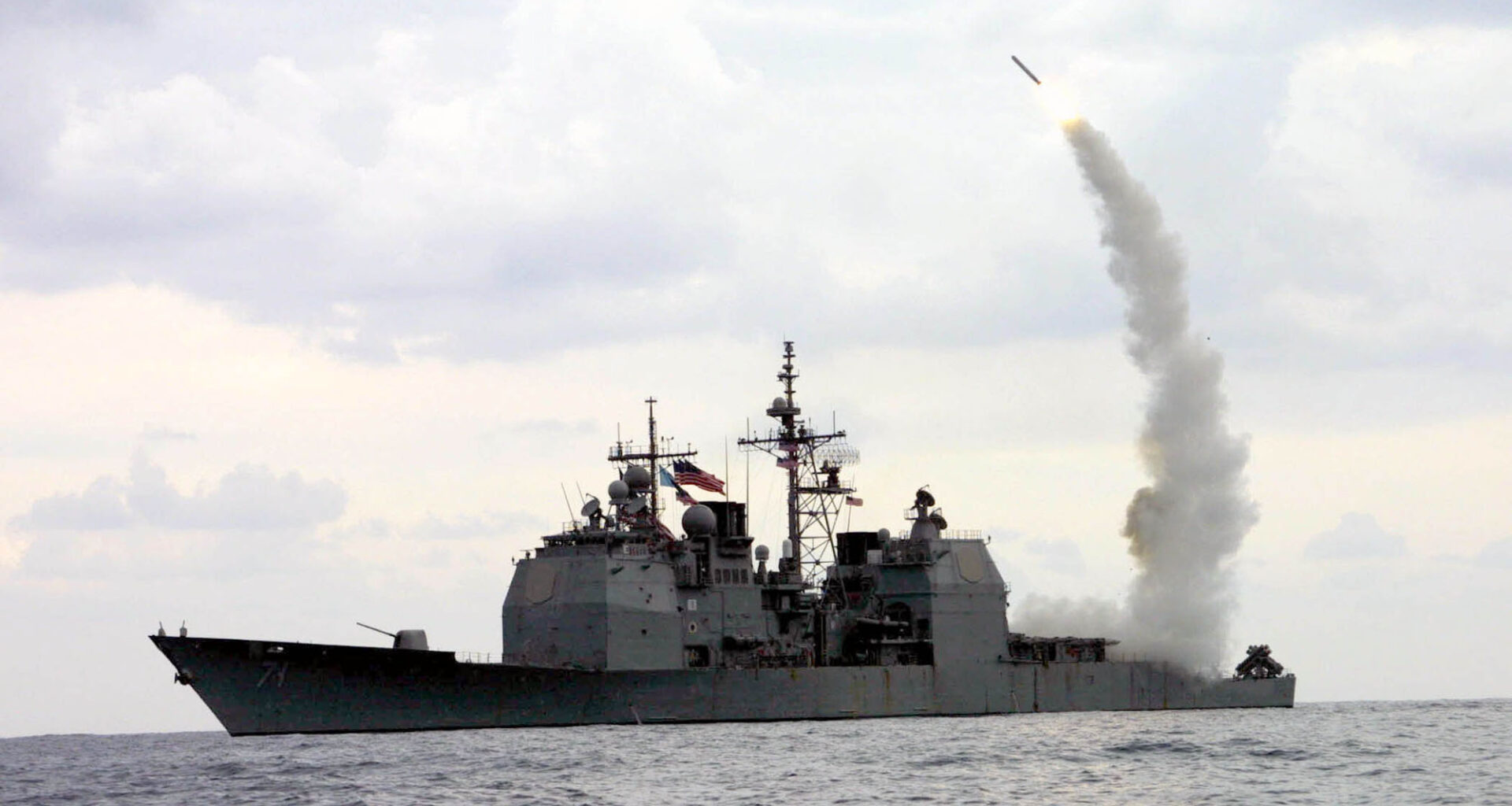Russia continues to project power with its Kalibr cruise missile systems, maintaining missile-equipped warships in the Black Sea, Mediterranean Sea and Pacific Ocean.
In response to the latest Russian drone and missile attacks in the ongoing war with Ukraine, Odesa lawmaker Oleksiy Goncharenko accused Russian President Vladimir Putin of waging war on civilians, describing the strikes as “terrorist tactics.”
Goncharenko told Newsweek that more than 20 drones hit Odesa in a single night, killing two people and damaging homes, a post office and a school—adding that in some buildings, “an entire floor was blown away.” Ukrainian authorities also reported fresh Kalibr threats coming from Russia’s Black Sea fleet.
Russia has made extensive use of the Kalibrs to hit targets in southern and eastern Ukraine since the war began on February 24, 2022.
Meanwhile, the U.S. has expanded its Tomahawk missile deployments across the Indo-Pacific, bringing the strategic role of sea-launched cruise missiles into focus.
But how does the Kalibr compare to the United States’ flagship cruise missile, the Tomahawk? Here’s a breakdown of both systems.

A Tomahawk Land Attack Missile (TLAM) launches from the guided missile cruiser USS Cape St. George (CG 71).
A Tomahawk Land Attack Missile (TLAM) launches from the guided missile cruiser USS Cape St. George (CG 71).
Intelligence Specialist 1st Kenneth Moll/U.S. Navy via AP, File
Range
The range of cruise missiles can vary based on launch conditions, altitude and flight profile. The 3M-14 Kalibr, the land-attack version of Russia’s Kalibr missile family, has an estimated range of 930 to 1,500 miles.
The U.S. Navy’s Tomahawk Block IV and Block V variants feature a range of about 1,000 miles. While not as long-ranged as some Kalibr variants, Tomahawks benefit from real-time retargeting, which means it can detect, identify and strike a target almost immediately after it is located, often within minutes or seconds, using live or near-instantaneous data from sensors or reconnaissance systems.
U.S. Tomahawk Missile Deployment
The United States deploys Tomahawk cruise missiles primarily through its Ohio-class guided-missile submarines, such as the USS Michigan. These submarines are capable of carrying up to 154 Tomahawk missiles and have been observed operating in strategic locations like the Western Pacific, including Guam.
Additionally, U.S. Navy destroyers and cruisers equipped with vertical launch systems can deploy Tomahawks, extending their reach across various theaters. The U.S. has also been enhancing its missile capabilities in the Indo-Pacific region, with plans to deploy land-based Tomahawk missiles in areas such as Japan.
Given the Tomahawk cruise missile’s range of roughly 1,000 miles, U.S. deployments allow it to strike targets across East Asia—including parts of China, North Korea and Russia’s Far East—as well as regions in the Middle East and Europe, depending on the positioning of naval launch platforms such as submarines or surface ships.
Inland penetration deep into central China and Russia would exceed the missile’s range without closer deployment.
Russia’s Kalibr Missile Deployment
Russia has been actively deploying its Kalibr cruise missiles across various naval platforms. Notably, the Russian Navy has positioned Kalibr-equipped vessels in the Mediterranean, enhancing its strategic presence in the region. Further, Russian submarines, such as the Krasnoyarsk, have conducted Kalibr missile launches during exercises in the Pacific, demonstrating the missile’s operational versatility.
The Kalibr missile, with a range of up to 1,500 miles, allows Russia to project power across vast distances. From the Mediterranean, Kalibr missiles can reach targets throughout the Middle East and parts of Europe. Deployments in the Pacific enable coverage of areas in East Asia, including Japan and the Korean Peninsula. Additionally, Russia’s Black Sea Fleet, equipped with Kalibr missiles, poses a strategic threat to regions in Eastern Europe and the Caucasus.
The deployments underscore Russia’s intent to maintain a robust and flexible long-range strike capability across multiple theaters.

Long-range Kalibr cruise missiles launched by a Russian military ship from an unknown location.
Long-range Kalibr cruise missiles launched by a Russian military ship from an unknown location.
Russian Defense Ministry Press Service photo via AP, File
Speed
Kalibr flies at subsonic speeds (Mach 0.8) for most of its flight but can reportedly accelerate to Mach 2.5–3.0 in terminal phase for certain anti-ship variants.
The Tomahawk is a consistent subsonic missile (Mach 0.74), designed for stealth and terrain-hugging flight. Its steady pace allows for long loiter times and precise navigation, but it lacks a terminal speed boost.
Accuracy
Kalibr uses GLONASS satellite navigation and inertial guidance, with claimed precision in Syria and Ukraine. While official CEP (circular error probable) data is unavailable, open-source assessments suggest it is accurate within a few meters.
Tomahawk employs GPS, TERCOM (terrain contour matching), and DSMAC (digital scene-matching) for high precision. According to the U.S. Navy, its CEP is under 10 meters, with decades of proven accuracy in Iraq, Syria and Libya.
Power
Both missiles carry a 450 kg high-explosive warhead. Kalibr variants are reportedly nuclear-capable, a fact referenced in strategic deterrence exercises like the recent Barents Sea launch.
The Tomahawk formerly had a nuclear version (TLAM-N), but the U.S. retired it in the 2000s. Current variants are conventionally armed only.

A Russian submarine launches several 3M-54 Kalibr (Klub) anti-ship missiles, for the first time from under water, on December 9, 2015.
A Russian submarine launches several 3M-54 Kalibr (Klub) anti-ship missiles, for the first time from under water, on December 9, 2015.
Russian Federation via AP
Combat History
Kalibr was first used operationally by Russia in 2015 in Syria, launched from the Caspian Sea. It has since been used in Ukraine, with Russia claiming precision strikes on infrastructure targets.
Tomahawk’s combat record dates to Operation Desert Storm (1991). It has been used in more than 2,000 strikes, including in Kosovo, Iraq, Afghanistan, Libya and Syria (U.S. Navy).
Launch Platforms
Kalibr is versatile, launched from ships, submarines and possibly ground-based mobile launchers (as seen in Kaliningrad). Russia has emphasized the modularity of its vertical launch systems.
Tomahawk is also highly flexible, launched from U.S. Navy destroyers, cruisers and submarines, with integration into NATO allies’ fleets underway.
Both missiles offer multi-platform flexibility, with Kalibr edging ahead in strategic surprise deployments.
Overall
While the Kalibr impresses with speed and range, the Tomahawk wins in battlefield track record and accuracy. Both missiles are formidable.
